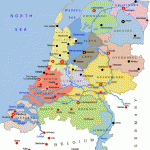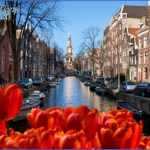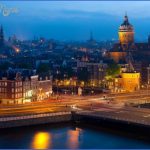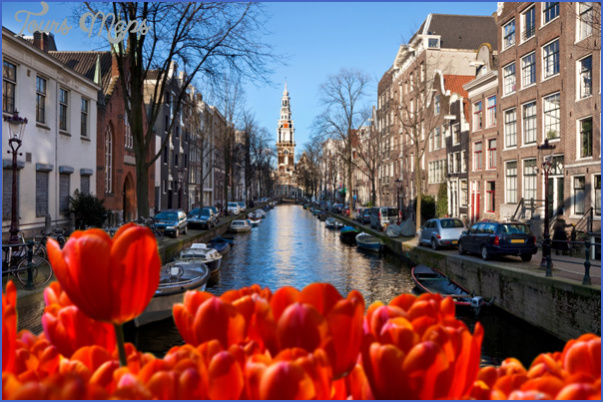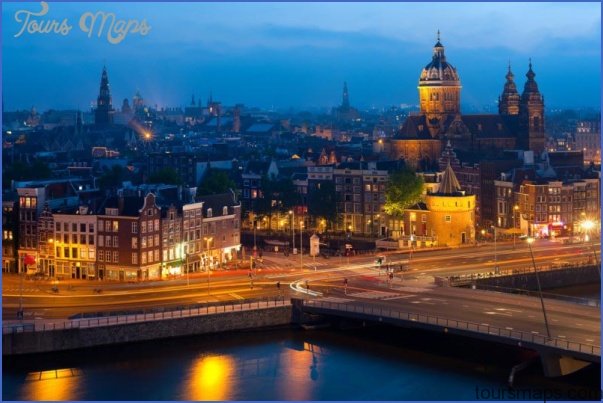Travel to Netherlands
WHEN TO GO
The ideal time to visit is between mid-May and early October, when day temperatures are generally 20-31°C (70-80°F), with nights around 10-20°C (50-60°F). It can be quite rainy; bring an umbrella. The tulip season runs from April to mid-May.
DOCUMENTS AND FORMALITIES
VISAS. South Africans need a visa for stays of any length. Citizens of Australia, Canada, the EU, New Zealand, and the US do not need a visa for stays of up to 90 days.
EMBASSIES. All foreign embassies and most consulates are in The Hague (p.797). The US has a consulate in Amsterdam (767). For Dutch embassies at home: Australia, 120 Empire Circuit, Yarralumla Canberra, ACT 2600 ( 02 62 73 31 11; www.netherlandsembassy.org.au); Canada, 350 Albert St. Ste. 2020, Ottawa ON KIR 1A4 ( 6130-237-5030; www.netherlandsembassy.ca): Ireland, 160 Merrion Rd. Dublin 4 ( 012 69 34 44; www.netherlandsembassy.ie); New Zealand, P.O. Box 840, at Ballance and Featherston St. Wellington ( 04 471 63 90; netherlandsem-bassy.co.nz); South Africa, 825 Arcadia St. Pretoria, P.O. Box 117, Pretoria (012 344 3910; www.dutchembassy.co.za); UK, 38 Hyde Park Gate, London SW7 5DP (020 75 90 32 00; www.netherlands-embassy.org.uk); and US, 4200 Linnean Ave. NW, Washington, D.C. 20008 ( 202-244-5300; www.netherlands-embassy.org).
TRANSPORTATION
BY PLANE. Continental, Delta, KLMNorthwest, Martinair, Singapore Airlines, and United serve Amsterdam’s sleek, glassy Schiphol Airport (AMS).
BY TRAIN. The national rail company is the efficient Nederlandse Spoorwegen (NS; Netherlands Railways; www.ns.nl). Train service tends to be faster than bus service. Sneltreins are the fastest; stoptreins make the most stops. One-way tickets are called enkele reis; normal round-trip tickets, retour; and same-day round-trip tickets (valid only on day of purchase, but cheaper than normal round-trip tickets), dagretour. Eurail and InterRail are valid in The Netherlands. The Holland Rail-pass (US$52-98) is good for three or five travel days in any one-month period. Although available in the US, the Holland Railpass is cheaper in The Netherlands at DER Travel Service or RailEurope offices. One-day train passes cost ‚35, which is about the equivalent of the most expensive one-way fare across the country. The fine for a missing ticket on Dutch trains is a whopping ‚90.
BY BUS. A nationalized fare system covers city buses, trams, and long-distance buses. The country is divided into zones; the number of strips on a strippenkaart (strip card) required depends on the number of zones through which you travel. A trip between destinations in the same zone costs one strip; a trip that traverses two zones requires two strips. On buses, tell the driver your destination and he or she will cancel the correct number of strips; on trams and subways, stamp your own strippenkaart in either a yellow box at the back of the tram or in the subway station. Train and bus drivers sell tickets, but it’s cheaper to buy in bulk at public transit counters, tourist offices, post offices, and some tobacco shops and newsstands. Dagkarten (day passes) are valid for unlimited use in any zone (‚5.20, children and seniors ‚3.60). Unlimited-use passes are valid for one week in the same zone (‚21, seniors and children ‚13; requires a passport photo and picture ID). Riding without a ticket can result in a ‚30 fine.
BY CAR. The Netherlands has well-maintained roadways. North Americans and Australians need an International Driver’s License; if your insurance doesn’t cover you abroad, you’ll also need a green insurance card. Driving in the Netherlands is expensive. Fuel comes in two types; some cars use benzene (‚1.50 per liter), while others use gasoline (‚0.90 per liter). The Royal Dutch Touring Association (ANWB) offers roadside assistance to members. For more information, contact the ANWB at Wassenaarseweg 220, 2596 EC The Hague (a 070 314 71 47).
BY BIKE AND BY THUMB. Cycling is the way to go in The Netherlands distances between cities are short, the countryside is absolutely flat, and most streets have separate bike lanes. Bikes run about ‚7 per day or ‚30 per week. Bikes are sometimes available at train stations and hostels, and Let’s Go also lists bike rental shops in many towns. For more info, try www.visithol-land.com. Hitchhiking is somewhat effective, but there is cutthroat competition on the roads out of Amsterdam. For more info on hitching, visit www.hitchhikers.org. Let’s Go does not recommend hitchhiking.
TOURIST SERVICES AND MONEY
Police; a 112. Ambulance: a 112. Fire: a 112.
TOURIST OFFICES. VW (vay-vay-vay) tourist offices are marked by triangular blue signs. The website www.visitholland.com is also a useful resource.
MONEY. On January 1, 2002, the euro (‚) replaced the guilder (NLG) as the unit of currency in The Netherlands. For more info, see 14. A bare-bones day traveling in The Netherlands will cost ‚30-35; a slightly more comfortable day will run ‚50-60. Service charges are always included in bills for hotels, shopping, and restaurants. The value-added tax (VAT) and service charges are always included in bills for hotels, shopping, taxi fares, and restaurants. If you buy an expensive item like a diamond, you are probably eligible for a tax refund. Keep your receipt and fill out a form at the airport. For more info on VAT, see 16. Tips for services are accepted and appreciated but not necessary. No waiter expects a 15% tip in Amsterdam, though it would most likely be appreciated. Ten percent is more normal; taxi drivers generally get tipped that much as well. Bouncers in clubs are often tipped ‚1-2 as patrons leave the club.
Travel to Netherlands Photo Gallery
Maybe You Like Them Too
- Explore Góra Kalwaria, Poland with this detailed map
- Explore Gumdag, Turkmenistan with this detailed map
- Explore Telfes im Stubai, Austria with this detailed map
- Explore Langenselbold, Germany with this detailed map
- Explore Krotoszyn, Poland with this detailed map

